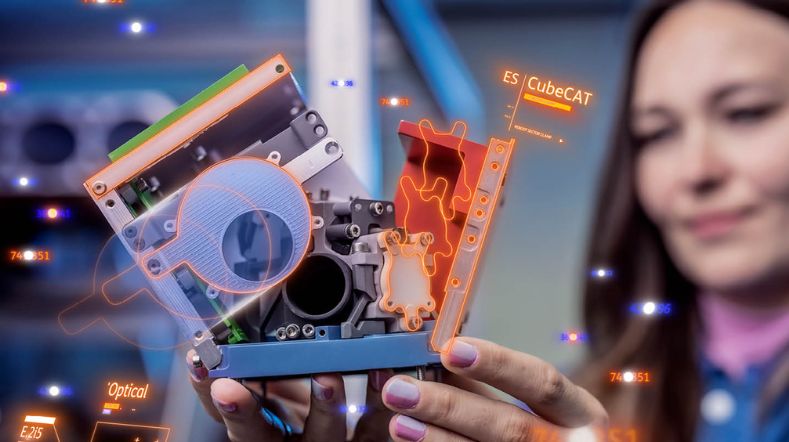TNO-led Dutch consortium to develop HemiCAT laser communication terminal
TNO will begin developing a laser communication terminal with a consortium of Dutch partners. This high-efficiency miniature demonstrator called HemiCAT will increase data transmission capabilities of small satellites via direct to earth laser communication.
Agreement Raytheon Missiles & Defense and Dutch government
The signed contracts between TNO, several Dutch partners, and Raytheon Missiles & Defense (RMD), a Raytheon Technologies business, for the HemiCAT LaserSatCom project paved the way to kick-off the project early 2023, with an in-orbit demonstration in 2026.
Laser communication technologies enables the significant amounts of data being generated on satellites, to be send directly to earth without the restrictions of standard radio frequency communication technologies. It achieves this by transmitting the data in the infra-red wavelength range, where there is the potential of higher bandwidth data transfer.
Where radio frequencies are limited to some megabits per second (Gbps) for small satellite applications, using laser communication can increase the transmission capabilities of these satellites ten to hundred fold. On top of that laser communication links are seen as being much more secure than Radio Frequency communication links and the systems have the potential of lower size, weight and power, which is important in the Space domain.
The HemiCat project is made possible as part of an industrial participation agreement between RMD and the Commissariat for Military Production of the Ministry of Economic Affairs and Climate Policy (MEA).

Next step in optical satellite communication
The HemiCAT terminal builds upon the Laser Communication terminal CubeCAT, which is due to be first launched early in 2023. Based on further development of the CubeCAT terminal, HemiCAT will demonstrate the vital technology by sending the communication laser to the ground station, using mirrors. This will enable HemiCAT to communicate without the need of reorientating the satellite whilst tracking and following the receiving ground station. When in orbit, HemiCAT will communicate primarily with the TNO optical ground station at a TNO location in The Hague, The Netherlands. In addition, HemiCAT will also take steps towards being interoperable with the emerging LEO constellations as an alternative means for downlinking data when the optical ground stations are not available.
Industrial Participation and public private partnerships combined to create a “win-win-win”
The strengthening of the relationship between TNO and Raytheon through the HemiCAT project is made possible by combining Industrial Participation funds, made available by the Dutch MEA and RMD, and a PPS grant for public-private partnerships by Holland High Tech. All stakeholders benefit, leading to a “win-win-win” situation. The project further develops a key capability within the NATO alliance, strengthens and positions the Dutch defence industry in international supply chains, and allows international partners to benefit from innovative Dutch solutions.
Project partners
The HemiCAT project is a consortium led by TNO and includes FSO Instruments represented by Demcon and the Dutch company AAC Hyperion (part of AAC Clyde Space) who will be providing the electronics and software.
Get inspired
First Dutch hybrid quantum channel for secure communication successfully established


TNO's laser communication terminal secures prestigious win at EARTO Innovation Awards


TNO launches Qu-STAR to pioneer quantum internet via space


This is our time: Industrialising TNO's optical satellite communication technology


This is our time: working on breakthroughs in laser satellite communication


